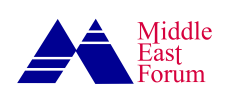Given the importance of U.S.-Iran relations, surprisingly little academic literature tackles the topic. Historian Barry Rubin published his take in Paved With Good Intentions in 1980, even as the Iranian hostage crisis was underway. Political scientist James A. Bill wrote The Eagle and Lion in 1985, and military historian Ken Pollack contributed The Persian Puzzle two decades later—good books all, though handicapped by near-exclusive reliance on U.S. documents. Anthropologist William O. Beeman’s 2005 book The “Great Satan” vs. the “Mad Mullahs” is a careless polemic. Happily, University of Pennsylvania historian Firoozeh Kashani-Sabet helps correct this deficit with Heroes to Hostages.
While her title suggests a starting point of 1800, Kashani-Sabet effectively begins her narrative in 1833 with the dispatch of an American missionary to Persia (as English-speakers then referred to Iran). She discusses the impressions formed by subsequent missionaries and their interactions with Persians, including some missionaries’ fascination with early Babis and Baha’is. Minorities are given due attention—for example, in accounts noting the poor conditions and occasional violence endured by Persian Jews.
Kashani-Sabet covers many topics: trade, the origins of Persian Studies in the United States, the popularity of the Persian Pavilion at the 1893 Chicago World Fair, and even the Persian fascination with Yosemite. Over the following decades, relations between the two countries developed on multiple fronts, from the arts and education to diplomacy, though the United States remained less significant to Iran than the United Kingdom.
Heroes to Hostages touches on major historical episodes, such as the William Morgan Shuster affair (when the British and Russian empires colluded to undermine American efforts to relieve Persia of its debt) and Arthur Millspaugh’s subsequent financial mission. She explains Iran’s pivot toward Washington as Iranian leaders began to view the United States as a nation with “no axe to grind.”
That changed, of course. Kashani-Sabet fleshes out the World War II-era occupation in useful detail, exploring it thoroughly and recalling forgotten episodes such as the influx of Polish refugees. She delves deeply into foreign investment but tends to rehash British developments and, unfortunately, skips the failed efforts by Standard and Sinclair to involve the United States more directly in Iranian oil production.
The narrative then traces the well-known story of the Iranian clergy’s growing political activism leading up to 1979 Islamic Revolution. More interestingly, Kashani-Sabet adds color that other academics’ narrower preoccupation with diplomacy fails to offer, revealing how Iranians viewed the civil rights battles, the assassination of Martin Luther King Jr., the athletic triumphs of Muhammad Ali and Arthur Ashe, the Vietnam War, and the sexual revolution.
While Heroes to Hostages breaks some new ground and benefits from clear writing, the account sometimes feels like a hodgepodge. Why include a superficial discursion on Iran’s ties to Africa or Israel? And in the section on Israel, why is there no mention of either Shmuel “Ziama” Divon (who established relations with the shah in 1949) or Uri Lubrani (Israel’s outsized de facto ambassador to Tehran)?
At times, the narrative feels forced. Does a Persian newspaper’s serialization of a George Washington biography in 1905 truly mean he became a “political paragon” for Persian revolutionaries? The author reveals biases in exculpating Mohammad Mosaddegh without acknowledging his intolerance or his subversion of Iran’s constitution.
A lack of expertise in American policies leads to errors. The Baghdad Pact, for example, did not simply build on World War II’s Middle East Command but represented a defense against Soviet expansionism. The author also overlooks much of the internal dissension within the Carter administration and fails to give the hostage rescue attempt its due.
The epilogue extends to events after 1988, reaching as far as the Woman, Life, Freedom movement of 2022. However, it does not hold up well, revealing Kashani-Sabet’s weak grasp of the Iranian economy and the Islamic Revolutionary Guard Corps. It also testifies to the insularity of university academics when it comes to U.S. policy debates.
Despite its flaws, Heroes to Hostages contributes to the literature, expands the field, and provides an interesting read for all.




